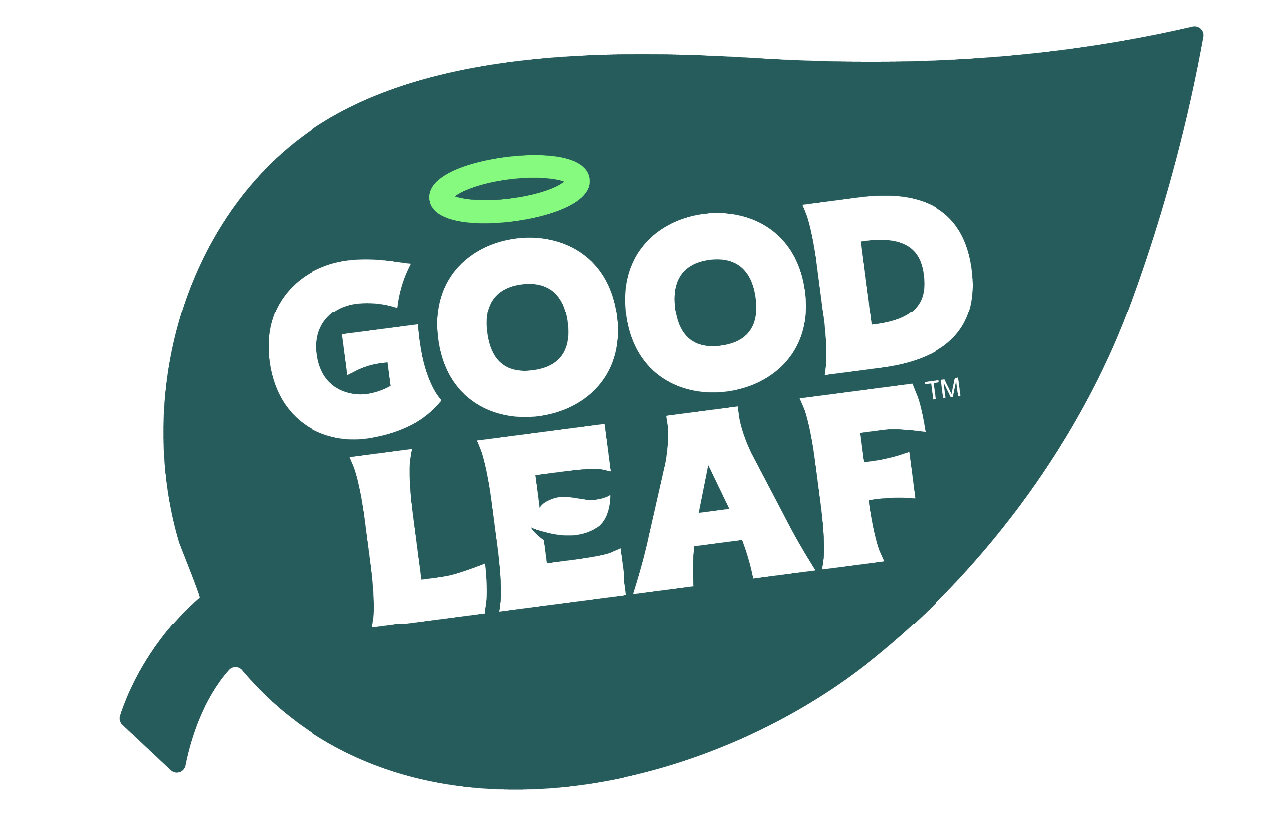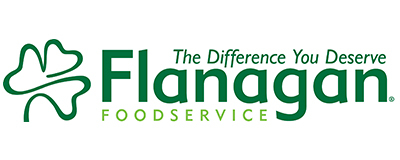
We collect basic website visitor information on this website and store it in cookies. We also utilize Google Analytics to track page view information to assist us in improving our website.

Summer is a high-demand season in foodservice, and with it comes the need to operate smarter. With increased guest volume, patio seating, and higher staff turnover, efficient tools can help your operation run more smoothly while controlling costs and minimizing waste.
Cascades, a proudly Canadian-owned company, offers a smart, long-term solution with Cascades PRO Perform® Interfold Napkins, paired with Cascades PRO Tandem® dispensers. More than just a seasonal switch, this combination is designed for foodservice environments that prioritize performance, responsibility, and results.
Napkins are often overlooked as a cost driver. But they play a larger role than just cleaning hands or containing spills. In high-volume service areas, napkin overuse leads to excess waste, frequent refills, and inflated operational costs.
Cascades PRO Perform® Interfold Napkins are designed to help solve these challenges. They’re durable and purpose-built for fast-paced environments.
What makes these napkins different?
By switching to a product that does more with less, you help reduce both your environmental footprint and your supply costs.
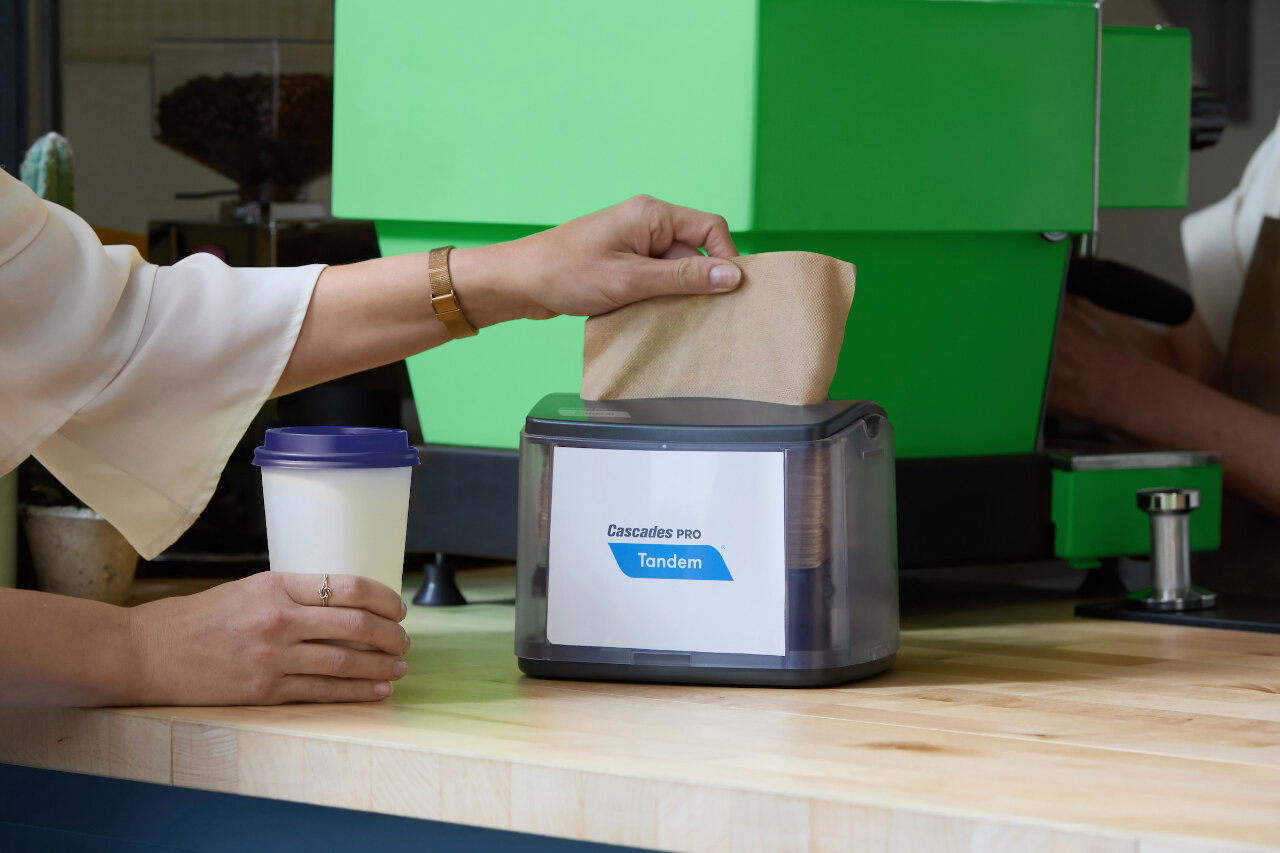
The design of the napkin—specifically how it’s dispensed—can impact how much your customers use. Traditional bulk napkins invite users to grab multiple at once, often more than they need. This leads to unnecessary waste and higher replenishment frequency.
Although the napkin is the central player, the Cascades PRO Tandem® Interfold Napkin Dispenser supports it with functional design:
When paired with Cascades PRO Perform® Napkins, the dispenser becomes an all-in-one solution that addresses hygiene and operations.
When you choose Cascades PRO Perform® Interfold Napkins, you’re investing in a smarter system that helps your operation:
✅ Reduce waste and consumption
✅ Lower refill frequency and labor time
✅ Support corporate sustainability goals
✅ Improve hygiene and customer satisfaction
Now is the time to rethink the everyday tools that keep your foodservice business running. With Cascades PRO Perform® Interfold Napkins, you're not just switching a product—you’re improving how your operation runs.
[1] The products under this certification are suitable for industrial and municipal composting facilities, not for home composting. Please check locally, facilities may not exist in your area.
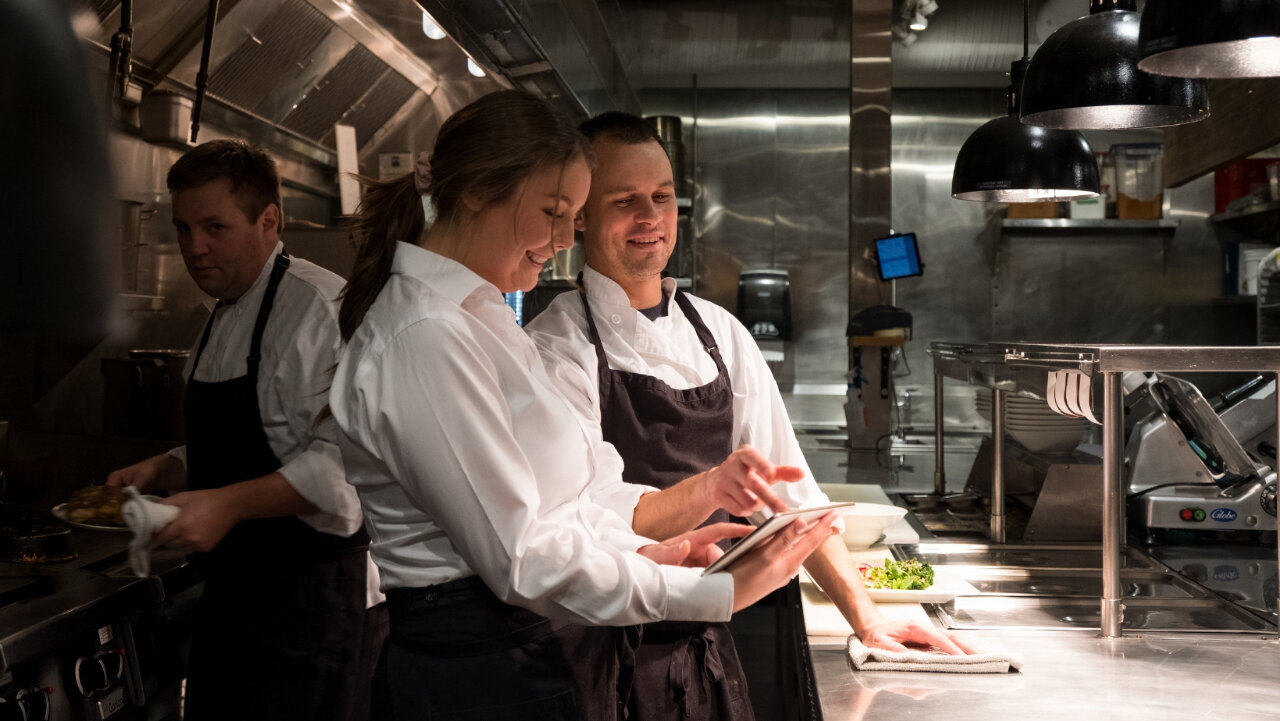
Running a successful foodservice operation takes more than just great food—it requires smart decisions that add value to your business. Flanagan Foodservice is proud to support operators by offering Brand Points PLUS, Canada’s premier loyalty program for foodservice professionals.
As a proudly Canadian-owned company, we understand the challenges you face and are committed to helping you maximize every purchase. With Brand Points PLUS, you earn rewards on the products you already buy while gaining access to exclusive benefits that help your business thrive.
If you haven’t joined yet, here’s what the program is all about and how it can benefit your business.
Brand Points PLUS (BP+) is about giving back to operators. Whether you’re stocking up on week-to-week essentials or investing in premium ingredients, BP+ is designed to reward your purchases of national brand products by offering exclusive benefits that enhance profitability and operational efficiency.
With exclusive offerings like Brand Points PLUS | Rewards, Brand Points PLUS | Cash, and Brand Points PLUS | Exclusive Offers wrapped into one reward program, your loyalty not only gets acknowledged but directly benefits your bottom line.
As a Flanagan Foodservice customer, you gain the option to sign up for:
With every eligible purchase, earn points that can be redeemed for a wide variety of rewards tailored to your needs. This includes kitchen equipment, business tools, gift cards, trips and more! It’s simple—shop, earn, redeem. These rewards reflect the value we want to bring to your business for choosing trusted suppliers.
Sometimes, cash back makes the most impact. Convert your loyalty directly into savings and earn cash rebates through eligible purchases. This system offers unmatched flexibility, allowing foodservice operators to use their cash rewards in the way that benefits them most.
Access limited-time deals and promotions from companies that understand the needs of foodservice operators. Whether it’s on the products you already use or valuable services, these offers provide savings, discounts, or additional points just for being a BP+ member. These exclusive offers help stretch your purchasing power, giving you more opportunities to reinvest in your business and drive growth.
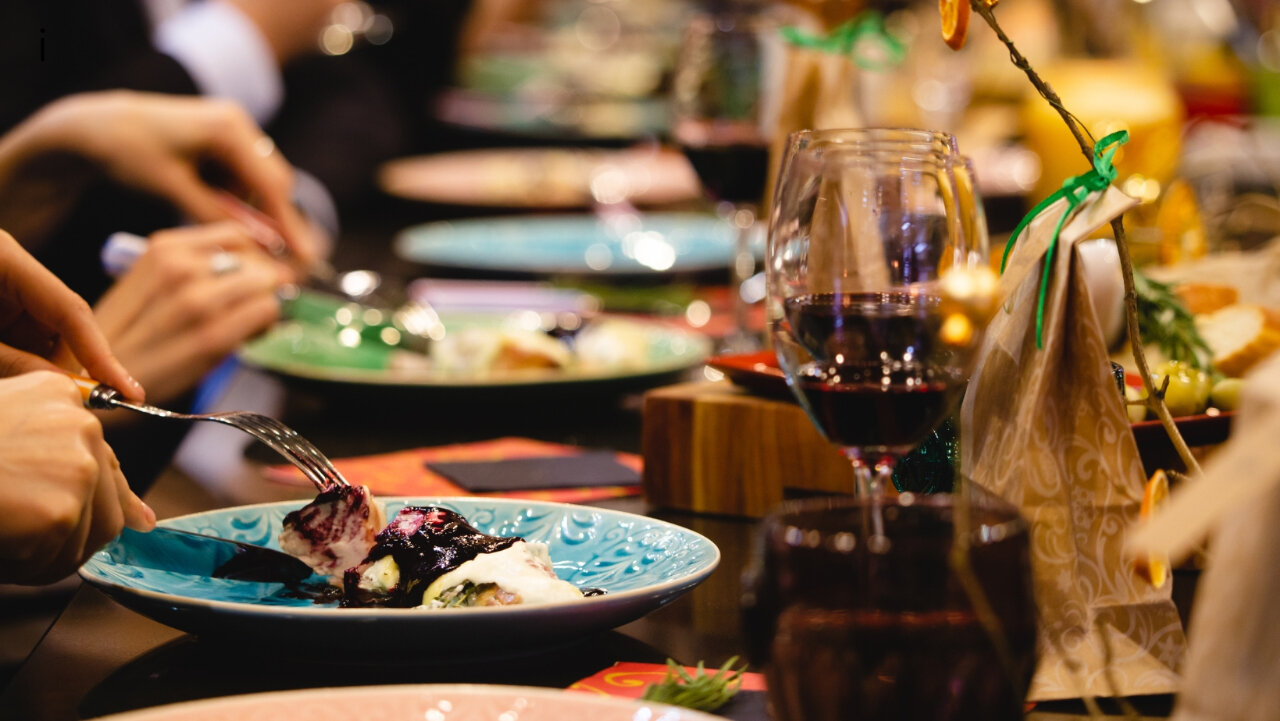
Supporting a Canadian-owned rewards program keeps your loyalty local. This aligns with Canadian values while strengthening the foodservice industry in our communities. Being Canada-focused means the program understands your challenges and needs, providing solutions that resonate with your business.
You spend thousands every year on essential supplies. Why not make those purchases more rewarding? Brand Points PLUS turns your investments into tangible rewards, adding value to the money you’re already spending.
The combination of points-based rewards, cash-back options, and exclusive offers ensures that there’s something for everyone. You have the flexibility to choose the perks that best fit your business ambitions and lifestyle needs.
Every point, cash reward, and offer with Brand Points PLUS contributes directly to your financial health. These benefits allow you to reduce costs, reinvest in your team and equipment, or scale operations.
Brand Points PLUS works with a trusted network of industry leaders. By participating, you know you’re not just supporting any supplier—you’re associating with top-tier brands committed to your success.
Getting started is quick and easy! If you want to sign up for both BP + Rewards and BP+ Cash, you can use this express sign up form. If you are already a member of one and need to sign up for the other program, insutructions are below.
Follow these steps to enroll and start earning rewards today:
Visit the Brand Points PLUS express sign up form: Click here
Sign Up: Follow the prompts to provide your Flanagan sales information, preferences, business details & required credentials
Start Earning Points: Congrats! You’re now a BP+ Rewards and Cash member and will begin earning points
Visit the Brand Points PLUS Website: Go to www.BrandPointsPLUSCanada.com
Sign Up: Click the "sign up" button is at the top right corner of the homepage
Create an Account: Click “create account" and provide your business details, contact information, & required credentials
Submit your Form: Review your information & click “Create Account” at the bottom of the page. You will receive a confirmation email, please confirm the account
Start Earning Points: Congrats! You’re now a BP+ Rewards Member and will begin earning points
Visit the Brand Points PLUS Website: Go to www.BrandPointsPLUSCanada.com
Navigate to the BP+ | Cash Page on the Navigation Bar: Scroll down, to the “Sign Up Now” button
Fill out the Registration Form: Provide your business details, contact information & required signature
Submit your Form: Review your information & click “submit”. You will receive a confirmation email notifying you that we received your request to join the program
Application Review: If your application is approved, you will receive a welcome email the following week. If your application is denied, your distributor sales rep will contact you
Start Earning Cash Rebates: Congrats! You’re now a BP+ | Cash Member and will begin earning rebates
Flanagan Foodservice is committed to helping foodservice operators succeed, and Brand Points PLUS is just one of the many ways we support your business. By joining the program, you’re not just making smart purchases — you’re maximizing every dollar spent.
Sign up today and start turning your everyday foodservice purchases into valuable rewards and savings!
Are you in search of a food service distributor in Ontario? Look no further! In this article, we will explore the role and importance of foodservice distributors, as well as provide a list of the best food distributors in Ontario.
Operating a restaurant or foodservice business requires immense dedication and juggling various responsibilities, such as labour management, supplies, accounting, marketing and growth. However, partnering with the right foodservice distributor can significantly reduce your workload and alleviate some of the stress.
A foodservice distributor plays a crucial role by supplying both food and non-food products to a range of establishments including restaurants, caterers, cafeterias, nursing homes, and hospitals. These distributors receive items in large quantities from various food manufacturers and break them down into case quantities for operators. This ensures that operators only receive the products they need on a single truck, simplifying logistics. Typically, restaurant owners receive their orders from their chosen foodservice distributor on a weekly basis.
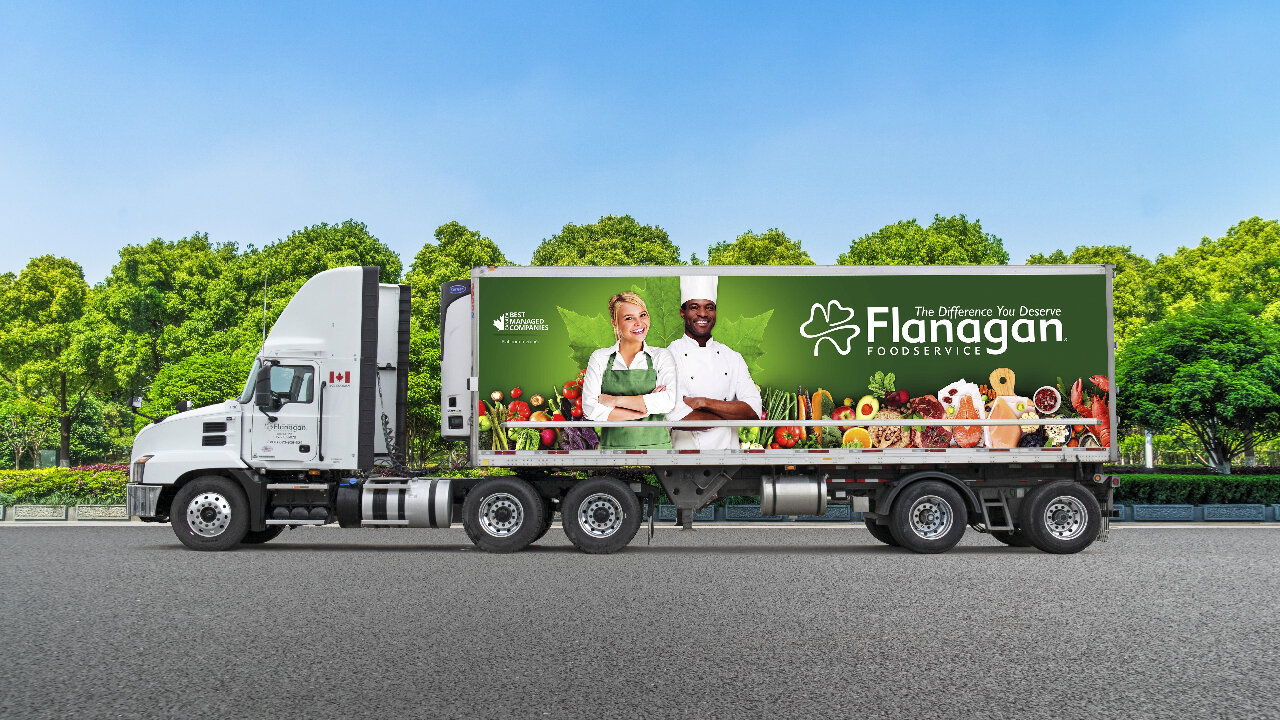
In addition to streamlining deliveries, an Ontario food distribution company also offers valuable support and expertise. Your dedicated sales representative will serve as a consultant, bringing you fresh ideas, inspiration, and business strategies. They are there to help you overcome challenges and enhance profitability.
When it comes to maximizing efficiency and success in your foodservice operation, choosing the right foodservice distributor is paramount. Let us guide you through the process and connect you with the top food service distributors serving Ontario.
When it comes to choosing a foodservice partner in Ontario, Flanagan Foodservice stands out as a top choice. It’s the largest Canadian-owned and family-run foodservice distributor in the country, proudly serving Ontario for over 45 years. With distribution centers in Kitchener, Whitby, and Sudbury, Flanagan Foodservice is dedicated to providing restaurants and foodservice businesses of all types with convenience, efficiency, and exceptional service. The Flanagan group of companies also includes Capital Foodservice, F.J. Wadden, Roseland Produce and s.t.o.p. Restaurant Supply.
What really sets Flanagan apart is its commitment to putting customers first. Understanding the unique challenges foodservice operators face, Flanagan offers tailored solutions, flexible ordering, and a vast product selection. With a strong reputation for reliability and personalized service, Flanagan Foodservice is a trusted partner that helps restaurants thrive.
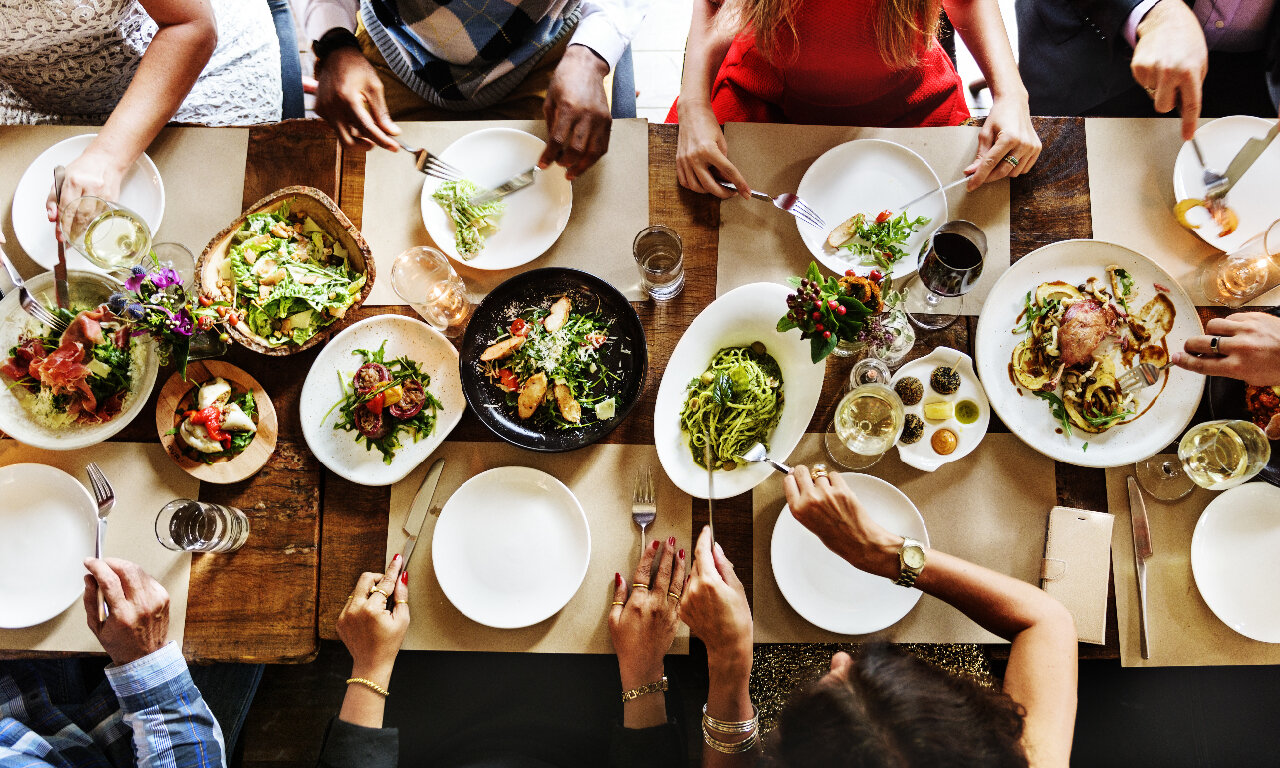
Based in Windsor, Ontario, Morton Wholesale is an independent foodservice distributor that proudly focuses on serving the local business community. The company supplies a variety of food and beverage products to restaurants across Southern Ontario and the Niagara Peninsula, catering to the needs of local businesses.
Stewarts Foodservice, located in Barrie, Ontario, is a Canadian-owned and operated distributor. They provide a wide range of products, including stocks, bases, and frozen varieties, to meet the needs of diverse foodservice operations. Stewarts is recognized for its commitment to quality and personalized customer relationships.
Sysco is an American-owned international foodservice distributor. With approximately 200 distribution facilities, Sysco Canada provides food products and industry solutions to restaurants, healthcare facilities, educational institutions, and lodging establishments. Sysco offers product options and resources for foodservice businesses of all types and sizes.
Gordon Food Service (commonly known as GFS), based in Grand Rapids, Michigan, is a family-owned company with a long history dating back to 1897. Serving a diverse range of customers, including restaurants, healthcare facilities, and schools, GFS offers a wide selection of food products and industry supplies.
Choosing the right foodservice distributor is crucial for the success of any business in the hospitality industry. Here are a few key factors to consider when making this important decision:
It's important to focus on the distributor's reliability and reputation. Look for wholesale food suppliers with a proven track record of delivering quality products on time and with excellent customer service.
Consider the range and variety of products they offer. A good distributor should have a wide selection of options to meet your specific needs.
It's essential to evaluate their pricing structure and terms. Compare prices and consider any additional fees or discounts they may offer.
Furthermore, ensure that the distributor can consistently meet your volume and frequency requirements.
Beyond just supplying products, choose a food distributor that provides value-added solutions to help your business thrive. From menu consultation and trend insights to cost-saving strategies and customer support, pick a company that’s willing to go the extra mile to ensure your success.
Lastly, take into account their delivery capabilities and geographical coverage to ensure they can efficiently serve your location.
By carefully considering these factors, you can choose a foodservice distributor that aligns with your business goals and helps you provide exceptional service to your customers. Do you have any more questions? One of our team members would be happy to help you!

Proudly Canadian owned, we're recognizing a new Canadian invention each week as we celebrate our great country's 150th year!
Paint Roller

1940: In 1940, Torontonian Norman Breakey came up with the idea of a painting tool that allowed anyone to easily paint walls, not just professionals who have time and patience to create a smooth finish.
Breakey envisioned a device that was shaped like a “7” that would hold a fabric-covered cylinder. He created the first roller, using it with a tin tray to hold the paint. Sadly, Breakey was unable to persuade investors to back his invention, and he lacked the funds to produce a significant supply of rollers. Manufacturers were able to easily duplicate his idea and produced their own (very similar) versions of the roller.
Breakey was never given credit for his invention, and did not reap any financial benefits. He may not have been recognized during his lifetime, but his work absolutely changed the lives of painters.
Insulin

1922: Insulin is a protein hormone that causes cells in your body to absorb glucose and use it for energy. Diabetes occurs when your body does not use or produce insulin properly. Though diabetes has been a medical condition for well over a thousand years, the discovery that diabetes is due to an insulin deficiency didn’t occur until the 1920s in Canada.
In 1921, Frederick Banting and Charles Best conducted a series of insulin manufacturing experiments at the University of Toronto. In January 1922, a diabetic teenager in Toronto received an injection of insulin, the first person to do so. He improved dramatically, and one year later in 1923, insulin became widely available (after the University of Toronto gave pharmaceutical companies license to produce insulin free of royalties). Many lives were saved as a result.
In that same year, Frederick Banting and John Macleod (a biochemist and physiologist who provided his laboratory to Banting for testing) received the Nobel Prize in Medicine.
Instant Replay

1955: George Retzlaff invented instant replay while working for CBC’s Hockey Night in Canada in 1955. He used a “wet film” (kinescope) replay of a goal which was then rebroadcast within thirty seconds. (Kinescope is the recording of television on motion picture film; the lens is directly focused on the television screen and then re-broadcast.)
Though the replay was not quite instant (as it was rebroadcast after 30 seconds), it was a pivotal moment in the history of sports broadcasting. Retzlaff also pioneered innovative camera angles that are still used today.
Butter Tarts

1900: The first recipe for butter tarts was published in the beautiful city of Barrie, Ontario in 1900. Wikipedia refers to butter tarts as “one of Canada’s quintessential desserts.”
The actual origin of the dessert (prior to the recipe being published) dates all the way back to the 1600s, when the idea of mixing syrup, eggs and dried fruit was more about using the ingredients on hand than intending to create a delicious treat.
The tart slowly evolved from there, and is now one of the few authentically Canadian recipes that exists on paper (and a personal favourite).
In case you’ve never tasted this delectable treat (!), butter tarts are made using just a few ingredients: a butter pastry shell, super, syrup, and eggs. Raisins or pecans are optional, but encouraged.
Five-Pin Bowling

1909: Thomas Ryan, born in Guelph, Ontario, moved to Toronto in 1905 with hopes of “making it big”. He opened the first ten-pin bowling club in Canada located in downtown Toronto (the intersection of Yonge and Temperance Streets). It was an elite establishment.
At the time, bowling was a “gentleman’s game”, and the men who worked near the bowling club would bowl during their lunch hour. They complained that the ten-pin game took too long; they would be too tired for the rest of the day after lifting the heavy bowling balls.
Ryan adapted the game to have five, lighter pins and a ball that weighed just 2.5 pounds: five-pin bowling was officially born.
Java Programming Language

1995: Java is a widely-used, general purpose computer programming language. It enables programmers to write computer code using English-based commands, rather than in numeric codes.
Java programming was created in the early '90s by a small team of engineers (called the “Green Team”) led by James Gosling. They initially created Java for use on digital mobile devices, though when the programming language was released in 1996, it became more centered to use on the Internet. It allowed developers to create animated webpages.
Today, Java is the force behind many smartphone apps, e-business solutions, and navigation tools.
Superman

1933: Superman (and his alter-ego, Clark Kent) was created by Toronto-born Joseph Shuster and Jerry Siegel of Cleveland. Shuster and Siegel were both high school students when they created the superhero and his story.
Initially, Superman was a villain determined to dominate the world. Siegel later re-wrote the character to be a hero, and spent the next six years searching for a publisher.
Superman’s debut appearance as a comic was in Action Comics in 1938, and the following year, a self-titled series was launched. Superman appeared in the McClure Newspaper Syndicate in 1939, and became a radio serial in the 1940s (1940-1951). In the '50s, a Superman television series was aired, and in 1978, Superman: The Movie is released, the first of many Superman-centered films.
To date, there have been 7 live-action television series, 7 animated television series, and 10 films about Superman and his story.
Trivial Pursuit

1979: Once called “the biggest phenomenon in game history” by TIME Magazine, Trivial Pursuit was invented in December of 1979 by Chris Haney and Scott Abbott while they played a game of Scrabble. Though they came up with the concept of Trivial Pursuit in only a few short hours, the game was not commercially released until November, 1981.
Initially, the game was being sold at a loss; it cost $75 to manufacture the game, and the game was being sold to retailers for $15. In 1983, Trivial Pursuit was licensed to Selchow and Righter (a major U.S. game manufacturer), and after a successful public relations effort the game became a household name.
To date, more than 100 million copies of Trivial Pursuit have been sold, with varying editions like the Star Wars Classic Trilogy Collector’s Edition (1997), Totally ‘80s (2006) and Trivial Pursuit for Kids (Volumes 1 to 6).
Computerized Braille

1972: The printing of braille was a slow and expensive process before Roland Galarneau, a legally blind Québécois, invented a new, efficient solution. In May of 1972, after the idea had come to him in a dream, Galarneau developed “Converto-Braille”: an electromechanical computer linked to a teletype machine that scanned and translated texts into Braille at a rate of 100 words per minute (ultimately eliminating the need to know Braille in order to transcribe a book).
At the time of Galarneau’s idea, microcomputers had yet to be invented. For the next five years, Galarneau built (from scratch!) the computer that could transcribe written texts into contracted Braille. He received a grant which went toward installing a micro-chip into the computers, which led to the publication of The Regional, a weekly newspaper in Braille.
Today, braille translation software can transcribe most languages as well as math and music.
AM Radio

1906: Reginald Fessenden, chief chemist for Thomas Edison and pioneer of wireless radio, invented AM voice transmission (later used as AM radios) as we know it today.
In 1897, after much research trying to improve the Morse code system without any luck, Fessenden took a break and was vacationing near Peterborough, Ontario to clear his head. During his holiday, ripples on a lake sparked the idea that perhaps sound could travel out from a centre continuously in the same way.
He spent the next nine years perfecting his idea in Massachusetts, and in 1906, Fessenden achieved 2-way voice transmission by radio between Machrihanish, Scotland, and Brant Rock, Massachusetts. It was Christmas Eve that Fessenden successfully made the first public broadcast of music and voice.
Despite his success, Fessenden did not receive recognition for his invention, and many of his patents were later adopted without his consent during World War II. Finally, in 1928, the US Radio Trust paid him $2.5 million in recognition of his contributions to radio technology.
Nanaimo Bars
1952: The Nanaimo Bar originated in Nanaimo, British Columbia – but that’s about all its residents can agree on when it comes to the origins of the chocolate, custard and coconut-graham base squares. Some say that the bar originated with Mabel Jenkins of Cowichan Bay, B.C., who submitted the recipe to a community cookbook in the 1950s. Others say the Edith Adams’ Cookbook published the inaugural recipe in 1953.
Nevertheless, this delicious treat is a treasured Canadian invention. The city of Nanaimo features many adaptations and variations to the favourite dessert, including deep-fried Nanaimo bars, martinis, lattes, cupcakes – even Nanaimo-themed pedicures!
In 1986, the city of Nanaimo held a contest to find the ultimate Nanaimo bar recipe. Joyce Hardcastle’s recipe was the winner of almost one hundred entries. The recipe is now holds the title as the official Nanaimo Bar recipe of the city. Her secret ingredient to the prize-winning treat? Unsalted butter; it mellows the sweet flavours of the bar. Nanaimo bar image provided by The Original Cakerie. |
 |
The Snowblower

1925: Dairy farmer Arthur Sicard invented the snowblower almost one hundred years ago in Saint-Léonard-de-Port-Maurice, Québec. During the winter, roads to the local town were too snow-covered for Sicard to deliver milk. In the summer, Sicard took note of the farming combines that would cut wheat and eject straw from the back of the vehicle. He was determined to create a vehicle or machine that could do the same thing to snow.
Sicard’s first few attempts were failures, and his neighbours thought him to be crazy. Finally, he created a vehicle that worked: a blower was attached to the front of a truck chassis and was propelled by a motor, with an adjustable chute. Despite initial mockery of his invention, Sicard was hired to clear the streets of the town.
A dairy farmer no more, Sicard patented his invention, founded Sicard Industries Ltd., and sold his first commercially-available snowblower to the town of Outremont, Québec. This invention allowed operators to propel snow (soft, hard, or packed) over ninety feet from the blower or directly into the back of a truck. In the 1950s, the first “walk-behind” snowblower was invented.
Though he passed in 1946, Sicard’s name lives on; Sicard Group (located in Québec and New York) supplies a complete line of industrial snowblowers, runway sweepers, and other related products to airports, municipalities, and military bases worldwide.
The Goalie Mask

1959: Initially considered a coward by hockey fans and purists, Montréal Canadiens goalie Jacques Plante was the first player to wear a mask during a game.
After a particularly bad hit to the face with a shot by Andy Bathgate of the New York Rangers, Plante left the ice to be stitched up. When he returned, he brought him with the homemade fiberglass mask he would wear during practices. Though he was mocked, Plante continued to wear the mask, and the Montréal Canadiens went on to win eighteen consecutive games that season. The goalie mask was officially born!
Since Jacques Plante’s fiberglass creation, the goalie mask has gone through many different designs to drastically improve players’ safety. (Plante had experienced over two hundred stitches and had his nose broken four times before he decided to protect his face.)
Today, all goalie masks are made of fiberglass, feature a “cage”, and can be decorated with cartoon characters or other designs.
It's no wonder we are proud to be Canadian!
References
Canadian Media Director’s Council Media Digest; Canadian Consumer Insights. 2014-2015.

Chefs have always used microgreens as a beautiful finishing touch to garnish their final dish, but did you know that microgreens can add benefits beyond their stunning looks?
GoodLeaf Farms is revolutionizing the way that microgreens are grown and taste through the powers of vertical farming. This innovative way of farming allows for these gorgeous greens to be grown in Ontario year-round, so you never have to worry about seasonality or availability. Their highly specialized growing methods and controlled environments allow for their microgreens to produce intense, delicious flavours that can be used to add to meals and used in creative ways. One of the standout features of Good Leaf products is that they are never touched by pesticides, herbicides, fungicides, or even human hands until they reach their final destination. This commitment to "Pure" farming ensures the utmost purity and quality.
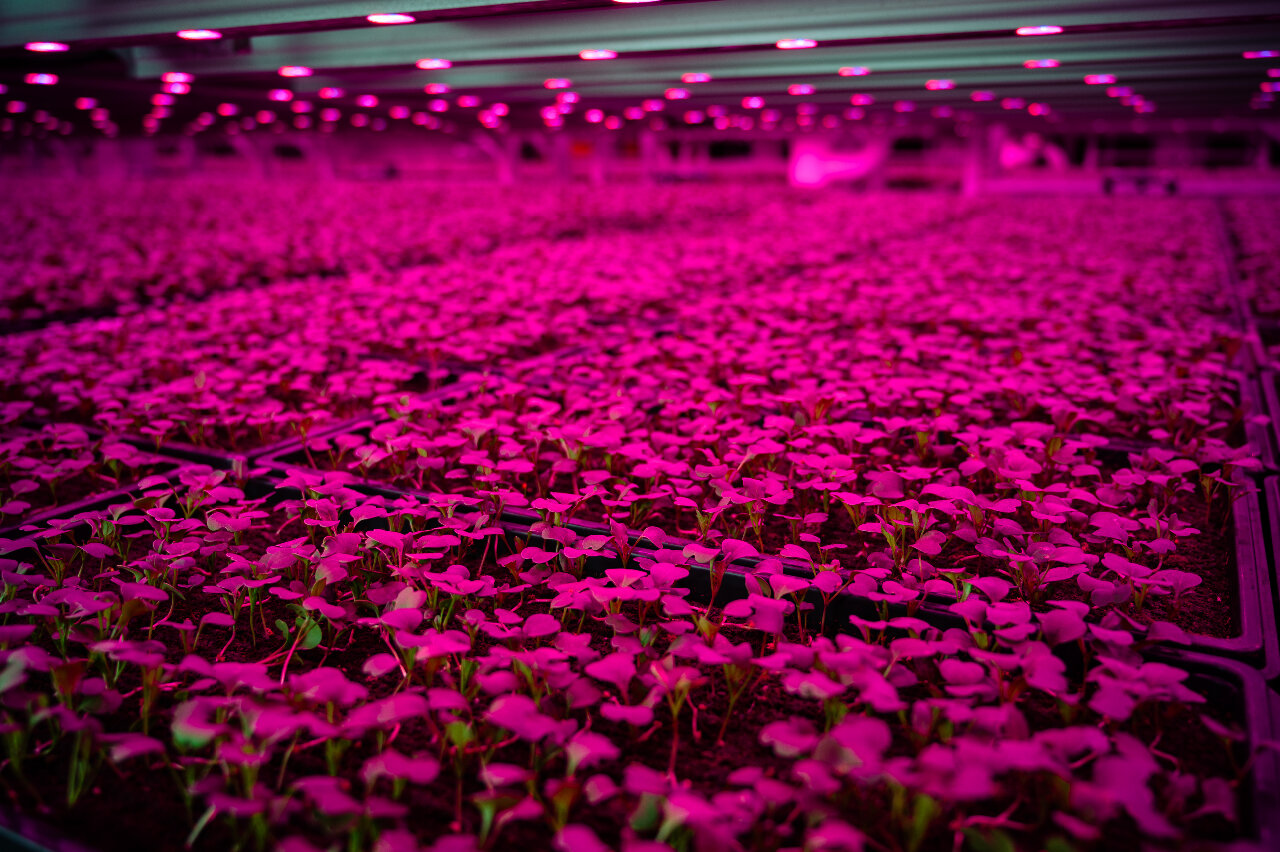
Here's 4 Ways Chefs can use Microgreens for more than just a Garnish:
.jpeg)
No matter the dish, GoodLeaf nutrient-dense microgreens are a simple and creative way for chefs to add flavours and colours to increase customers’ dining experience!"
